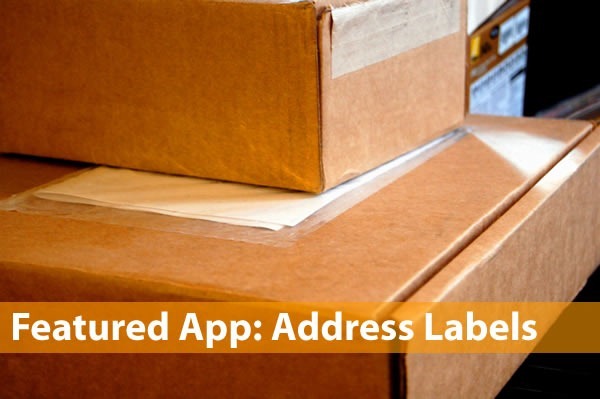
While having to put address labels on packages for your customers is a good problem to have – after all, it means you’ve made some sales – it’s still a problem. Luckily, there’s an app called Address Labels to solve this problem. We talked to Travis Haynes, the developer of Address Labels, and we shared we he told us; just read on to find out more.

A quick aside before we talk about Address Labels: The Shopify Fund is a million-dollar fund that we set up to encourage developers to build apps on the Shopify platform to extend the capabilities of shops and make shopowners’ and customers’ experiences better. If you’re a developer with an app idea, take a look and see if we can fund your app!
What does your Address Labels do?
Address Labels does one thing, but it does it well: it simplifies the tedious task of printing labels for your shop’s orders.
What are Address Labels’ key features?

Address Labels:
- Supports the major manufacturers’ label templates, including Avery.
- Pulls order data from your Shopify shop so you don’t have to export anything manually.
- Reduces time spent printing labels for orders to just a matter of seconds.
- Saves label batches for up to 7 days so you can reprint them if you need to.
There more features in the works that will be rolled out very soon,
including, but not limited to:
- Keeping track of which orders have been printed.
- Selecting from a list of fonts, or uploading your own fonts.
- Customizing the layout of the labels.
- Selecting which label to start printing from so that you can reuse partially printed label sheets.
Any additional feature requests are more than welcome!
Why should shopowners use Address Labels?
It can be very time consuming to copy and paste each individual order’s data into a word processor and format the text to make it look just the way you want. Address Labels makes this process as simple as selecting which orders you need to print the address labels for, tell it how many copies per order, and how many copies of return address labels you need, and then click "create labels". Your shop’s address is automatically used on the return address labels, so there’s no set up required to get going. Within about 15 seconds after signing up, you can print your first batch of labels.
Tell us a little about yourself.
I’m a freelance developer. If you asked me for a specific title, I would give you a look of frustration. I have no idea how I’m supposed to label the work I do other than "computer work," because of the enormous variety of jobs I’ve helped with over the years. I’ve done everything from setting up and
maintaining Linux servers and networks, to blogging, and SEO, and setting up eommerce solutions. All I can give you as far as a title goes is what I use on my tax forms, which states, quite vaugely: "IT Consultant."
Most of the work I do is behind the scenes, so I have very little web presence. I do have a Github account – github.com/travishaynes – and I suppose if you ever wanted to contact me, I would ask you to email me.
In my spare time I read Douglas Adams’ Hitchhiker’s Guide to the Galaxy, drink coffee, and compile Gentoo from scratch.
Where did you get the idea for Address Labels?
I got the idea from the Shopify forums. I saw it on the App Wishlist, and though to myself, "Hey, I could do that!" So I did.
How long did it take for you to build Address Labels?
I am actually building a whole suite of Shopify apps that will integrate seamlessly together as one big app. This was the one that took the least amount of time to finish. It’s been slow going, because I’ve been too busy with jobs that actually pay the bills, but this app took about two weeks to write, but I’ve been working on the other apps for about 6 months. So, stay tuned, because they are awesome apps!
Where can I find out more about Address Labels?
You can find out more about Address Labels on its page in the Shopify App Store.

One reply on “Featured Shopify App: Address Labels”
Wow the funds available to developers is great news for Shopify. It’s already a slick platform, now with more apps to be developed Shopify will get the missing features that were its only drawback. With the app model, you only install the ones you need, so the platform will remain slick, sleek, slim, and awesome (compared to all the bloated platforms out there).